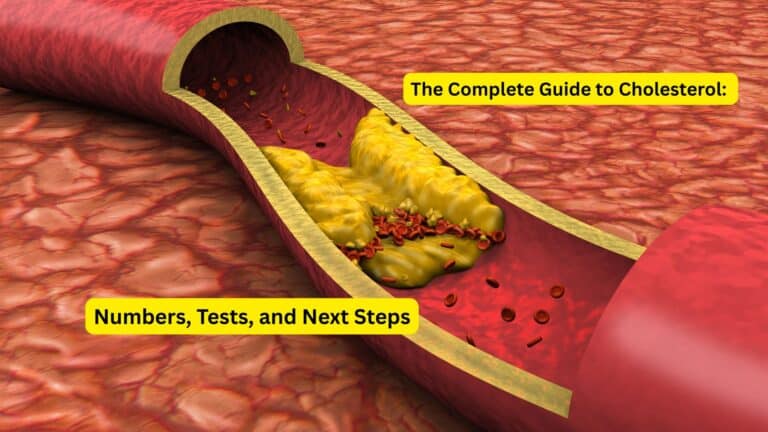Liver function tests (LFTs) are among the most commonly ordered blood tests, yet many patients find themselves staring at a page of numbers and abbreviations without understanding what they mean. These essential tests provide valuable insights into your liver’s health by measuring specific enzymes, proteins, and substances that reflect how well this vital organ is functioning. Understanding your results empowers you to have more meaningful conversations with your healthcare provider and take proactive steps toward better liver health.
What Liver Function Tests Measure
Liver function tests don’t actually measure a single “function” but rather evaluate multiple aspects of liver health through various biomarkers. Each component of the test panel tells a different part of your liver’s story, from detecting cellular damage to assessing the organ’s ability to produce essential proteins. Let’s break down what each marker reveals about your liver’s condition.
ALT & AST: The Liver’s Damage Detectors
Alanine aminotransferase (ALT) and aspartate aminotransferase (AST) are enzymes that normally reside inside liver cells. When liver cells are damaged or die, these enzymes leak into the bloodstream, making them excellent markers for detecting liver injury. Think of ALT as your liver’s most specific alarm system – elevated ALT usually indicates liver cell injury due to conditions like viral hepatitis, fatty liver disease, alcohol-related damage, or medication-induced injury.
AST, while also found in liver cells, is present in other organs including the heart and muscles, making it less liver-specific than ALT. However, the ratio between these two enzymes provides valuable diagnostic clues. When AST is more than twice ALT, it often suggests alcohol-induced liver injury, while roughly equal elevations of both enzymes typically point to non-alcoholic causes or infections.
Normal ranges typically fall between 4-36 IU/L for ALT and 5-30 IU/L for AST, though these can vary slightly between laboratories. Mild elevations (less than twice the upper limit) may be temporary and related to factors like recent exercise, certain medications, or minor viral infections.
ALP & GGT: Windows into Bile Flow
Alkaline phosphatase (ALP) and gamma-glutamyl transferase (GGT) serve as indicators of cholestatic liver issues – problems related to bile production or flow. ALP is found in several tissues throughout the body, including liver, bones, and intestines, but when elevated alongside other liver markers, it typically signals bile duct problems.
High ALP suggests bile duct obstruction or cholestatic liver disease, and GGT elevation alongside ALP strengthens this suspicion. GGT is particularly sensitive to alcohol consumption and certain medications, making it useful for detecting these specific causes of liver dysfunction. Normal ALP ranges from 30-120 IU/L, while GGT varies more widely based on age and gender.
Bilirubin: The Jaundice Connection
Bilirubin is a yellow pigment produced when red blood cells break down, and the liver is responsible for processing and excreting it through bile. When bilirubin levels rise in the blood, it can cause the characteristic yellowing of the skin and eyes known as jaundice. Elevated bilirubin can cause jaundice and indicates impaired bile processing or secretion, requiring prompt medical evaluation for persistent high levels.
Bilirubin exists in two forms: indirect (unconjugated) and direct (conjugated). Elevated indirect bilirubin often suggests problems with red blood cell breakdown or genetic conditions affecting bilirubin processing, while elevated direct bilirubin typically points to liver disease or bile duct obstruction. Normal total bilirubin ranges from 2-17 µmol/L (0.1-1.2 mg/dL).
Albumin & Prothrombin Time: Assessing Liver Synthesis
Unlike the enzymes that detect liver damage, albumin and prothrombin time (PT) measure the liver’s ability to synthesize essential proteins. Albumin is the most abundant protein in blood plasma, responsible for maintaining fluid balance and transporting various substances throughout the body. The liver produces virtually all of the body’s albumin, making it an excellent marker of synthetic function.
Low albumin levels may indicate chronic liver disease, malnutrition, or protein loss through the kidneys or intestines. Normal albumin levels range from 35-50 g/L. Prothrombin time measures how long it takes blood to clot and reflects the liver’s production of clotting factors. Prolonged PT can indicate advanced liver dysfunction or vitamin K deficiency.
How to Interpret Results
Understanding liver function test results requires more than just knowing whether values fall within normal ranges. The pattern of abnormalities, the degree of elevation, and the clinical context all play crucial roles in interpretation. Healthcare providers use sophisticated approaches to analyze these results and determine their significance for your health.
Understanding the R Ratio Classification
Medical professionals use a calculation called the R ratio to help classify the pattern of liver injury. The R ratio (ALT/ULN ÷ ALP/ULN) helps classify liver injury patterns: hepatocellular (>5), cholestatic (<2), or mixed (2-5), where ULN stands for upper limit of normal.
A hepatocellular pattern (R ratio >5) suggests primary liver cell damage, commonly seen in viral hepatitis, drug-induced liver injury, or ischemic liver injury. A cholestatic pattern (R ratio <2) indicates problems with bile flow, often due to gallstones, tumors, or certain medications. A mixed pattern (R ratio 2-5) combines elements of both types of injury.
Factors That Affect Results
Several factors can influence liver function test results beyond actual liver disease. Age, gender, body mass index, and ethnicity can all affect normal ranges. Certain medications, including over-the-counter pain relievers, antibiotics, and herbal supplements, can temporarily elevate liver enzymes. Recent intense exercise, muscle injury, or even the timing of blood collection can impact results.
Reference ranges for LFTs can vary by laboratory, age, gender, and body mass index, making it important to interpret results within the specific context of each individual. What might be considered mildly elevated for one person could be normal for another based on their baseline values and risk factors.
Normal vs. Abnormal: When Numbers Tell a Story
Isolated mildly abnormal LFTs (less than 2 times upper limit) occur in up to 8% of asymptomatic adults and often normalize with lifestyle changes or repeated testing. These mild elevations don’t always indicate serious liver disease and may resolve on their own.
However, marked elevations demand attention. ALT or AST levels exceeding 1,000 IU/L often reflect severe liver conditions, including drug-induced damage or acute hepatitis. Similarly, significantly elevated bilirubin levels, especially when accompanied by symptoms like abdominal pain or changes in stool color, require immediate medical evaluation.
When to Seek Medical Advice
Knowing when liver function test abnormalities warrant concern versus when they might be temporary fluctuations is crucial for appropriate medical care. The degree of elevation, persistence over time, and presence of symptoms all factor into determining the urgency of follow-up care. Understanding these distinctions helps patients avoid unnecessary anxiety while ensuring serious conditions receive prompt attention.
Distinguishing Concerning from Benign Abnormalities
Mild, isolated elevations of liver enzymes often resolve without intervention, particularly when they’re less than twice the upper limit of normal and not accompanied by symptoms. These findings might be due to recent medications, minor viral infections, or even laboratory variation. However, persistent abnormalities lasting more than three months, progressive increases over time, or elevations accompanied by symptoms like fatigue, abdominal pain, or jaundice require thorough evaluation.
Abnormal liver tests need interpretation in context – isolated mild elevations are often transient or due to non-liver causes, while persistent or markedly abnormal tests require further investigation. Your healthcare provider will consider your medical history, medications, alcohol use, and family history when determining the significance of abnormal results.
When Additional Testing Is Needed
Certain patterns of liver function test abnormalities trigger the need for additional testing. Significantly elevated enzymes, especially when accompanied by elevated bilirubin or abnormal albumin levels, often prompt imaging studies like ultrasound or CT scans. These tests can reveal structural abnormalities, fatty infiltration, or signs of chronic liver disease.
Viral hepatitis screening becomes important when liver enzymes are elevated without an obvious cause. Tests for hepatitis A, B, and C can identify viral infections that require specific treatment and monitoring. Additional blood tests might include autoimmune markers, iron studies, or genetic testing for inherited liver conditions.
Lifestyle and Next Steps
Your liver function test results often provide actionable information that can guide lifestyle modifications and preventive care. Understanding how daily habits impact liver health empowers you to take control of your results and potentially improve them over time. The liver’s remarkable ability to regenerate means that positive changes can often lead to measurable improvements in test results.
Impact of Diet, Exercise, and Alcohol
Alcohol consumption significantly affects liver function tests, with even moderate drinking potentially elevating enzymes in sensitive individuals. Complete alcohol cessation for several weeks often leads to normalization of mildly elevated liver enzymes in those without underlying liver disease. For individuals with alcohol-related liver changes, this lifestyle modification is crucial for preventing progression to more serious conditions.
Diet and exercise play equally important roles in liver health. Weight loss in overweight individuals can dramatically improve liver enzyme levels, particularly in those with non-alcoholic fatty liver disease. Regular physical activity helps reduce liver fat content and improve insulin sensitivity, both of which benefit overall liver function.
Monitoring Chronic Conditions
For individuals with chronic liver conditions, regular monitoring of liver function tests becomes part of ongoing medical care. The frequency of testing depends on the underlying condition, treatment medications, and disease stability. Some medications used to treat various conditions require regular liver enzyme monitoring to detect potential drug-induced liver injury early.
Albumin and prothrombin time monitoring becomes particularly important in advanced liver disease, as these tests help assess disease progression and guide treatment decisions. Changes in these synthetic function markers often occur later in liver disease progression but provide crucial information about liver reserve and prognosis.
Frequently Asked Questions
What does an elevated ALT mean?
Elevated ALT typically indicates liver cell damage or inflammation. Common causes include viral hepatitis, fatty liver disease, alcohol-related injury, medication effects, or autoimmune liver disease. Since ALT is primarily found in liver cells, its elevation specifically points to hepatic involvement rather than damage to other organs.
How do AST and ALT help identify causes of liver disease?
The ratio between AST and ALT provides diagnostic clues about the underlying cause of liver injury. An AST-to-ALT ratio greater than 2:1 strongly suggests alcohol-related liver disease, while ratios less than 1 typically indicate non-alcoholic causes like viral hepatitis or drug-induced injury. Very high levels of both enzymes (>1000 IU/L) often indicate acute liver injury from toxins, medications, or severe viral infections.
What does high alkaline phosphatase indicate?
Elevated alkaline phosphatase, particularly when accompanied by elevated GGT, suggests cholestatic liver disease involving impaired bile flow. This pattern can result from bile duct obstruction due to gallstones, tumors, or strictures, or from intrahepatic cholestasis caused by medications, primary biliary cholangitis, or other conditions affecting bile production within the liver.
When should I be concerned about bilirubin levels?
Elevated bilirubin levels that cause visible jaundice (yellowing of skin and eyes) require prompt medical evaluation. Even without visible jaundice, persistently elevated bilirubin levels may indicate liver dysfunction, bile duct problems, or increased red blood cell breakdown. Sudden increases in bilirubin, especially when accompanied by dark urine or light-colored stools, warrant immediate medical attention.
Can liver function tests be normal in advanced liver disease?
Yes, some liver blood tests can remain normal even in advanced disease, making comprehensive evaluation beyond LFTs critical. In cirrhosis, liver enzyme levels may actually normalize as fewer functional liver cells remain to release enzymes. This is why albumin, prothrombin time, and platelet count become more important markers in advanced disease, along with clinical assessment and imaging studies.
Conclusion
Understanding your liver function test results empowers you to take an active role in your healthcare and liver health. While these tests provide valuable information about liver function and potential problems, they represent just one piece of the diagnostic puzzle. The pattern of abnormalities, their persistence over time, and your clinical symptoms all contribute to the complete picture of your liver health.
Remember that mild, transient elevations in liver enzymes are common and often resolve without intervention. However, persistent abnormalities, significant elevations, or results accompanied by symptoms warrant prompt medical evaluation. Newer guidelines emphasize individualized interpretation integrating clinical symptoms, history, and risk factors beyond just lab numbers for better diagnosis and management decisions.
Most importantly, liver function tests support medical diagnosis but should never replace professional medical evaluation and advice. Use this knowledge to have more informed discussions with your healthcare provider, who can interpret your results within the context of your overall health and medical history. With proper understanding and appropriate follow-up care, liver function tests serve as valuable tools for maintaining and improving your liver health.
This content is for informational purposes only and is not a substitute for professional medical advice, diagnosis, or treatment. Always consult your healthcare provider regarding any questions about your medical condition or test results.






